This world is teeming with the creatures that wander and live in this world. Each more scary than the last.
The monsters come in various sizes...some a little smaller than humans to ones that tower large ships.
Each group of monsters are put in seperate types.
Neopteron: Neopterons are insect-like monsters known for their rigid carapaces. These monsters can range in size from tiny to enormous, and some species can fly, while others cannot.
Example:

Temnoceran: Temnocerans are a class of monster. This class is characterized by its spider-like characteristics, such as the ability to produce silk, although they have 6 limbs similarly to Neopterons or Carapaceons.
Example:
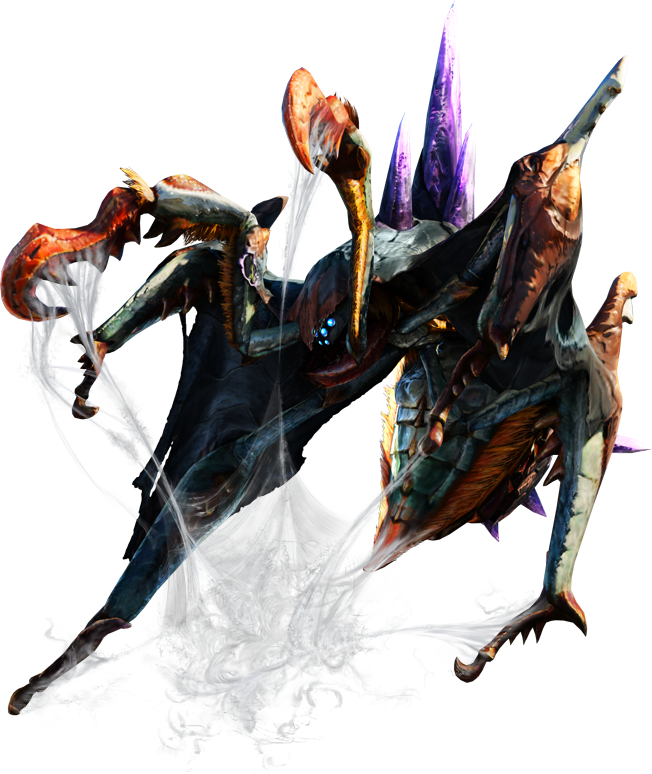
Bird Wyvern: Bird Wyverns are a class of monsters introduced in the first generation. They are a small to medium sized class that includes Flying Wyverns with slender bodies that are bipedal and, in some cases, either have wings or lack wings.
There are two distinct types of Bird Wyverns: Flying Bird Wyverns and Theropod Bird Wyverns. Flying Bird Wyverns exhibit similar characteristics to True Wyverns, with a bipedal stance along with developed and functional wings. Many of these possess a hard, sharp beak which can be used to peck at attackers, and generally behave in a bird-like manner. Theropod Bird Wyverns are reminiscent of Brute Wyverns; flightless, bipedal creatures with long tails and powerful legs. Unlike Brute Wyverns however, these monsters are generally quite small. Furthermore, Theropod Bird Wyverns almost always live under a social hierarchy, with young individuals, females and beta males led by a strong, dominant alpha male, which can command and control his subjects during combat.
Theropod Bird Wyvern Example:

Flying Bird Wyvern:
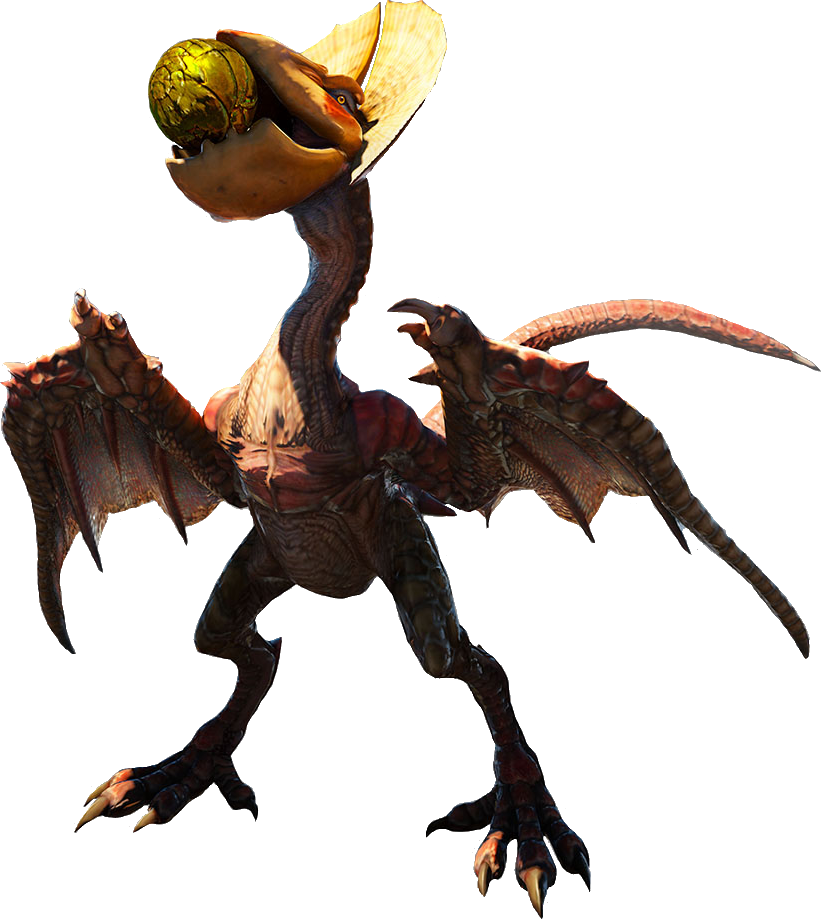
Flying Wyvern: Flying Wyverns are large, bipedal monsters that have two wings. These Wyverns are known as "True Wyverns". However, there are some Wyverns that are quadrupedal, operating their wingarms as forearms instead like Tigrex and Nargacuga. These monsters have been dubbed by fans as "Pseudo Wyverns" (Pseudo meaning "False" or "Mimic"), due to these species only displaying partial Wyvern traits. Some are flightless despite their classification as Flying Wyverns, like the Akantor and Ukanlos. These wyverns show their Wyvern ancestry by the small forewings on their two front limbs. Flying Wyverns make up a large majority of the monsters in the Monster Hunter world.
Pseudo Wyvern Example:
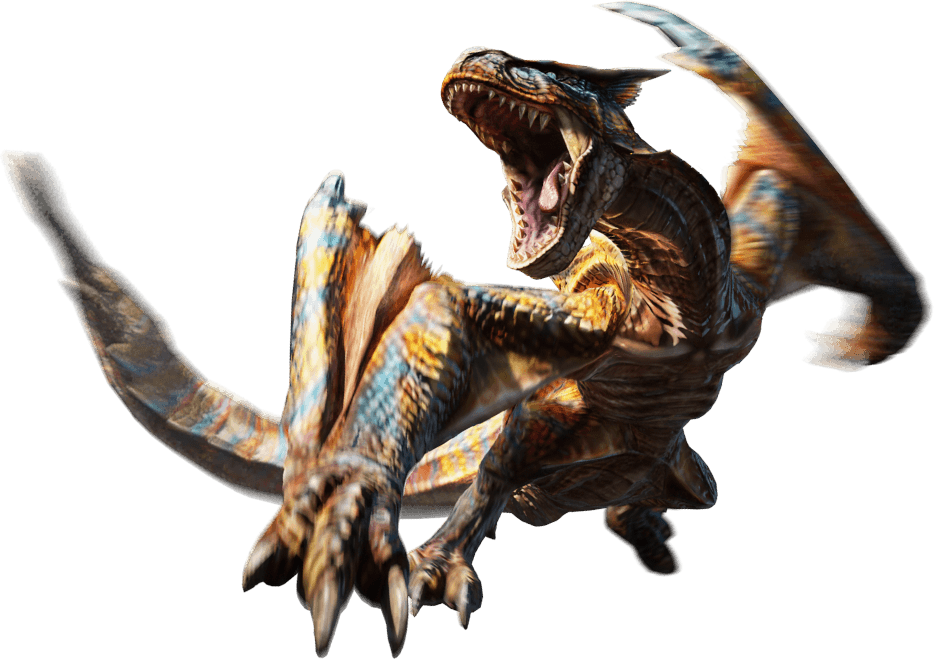
True Flying Wyvern:
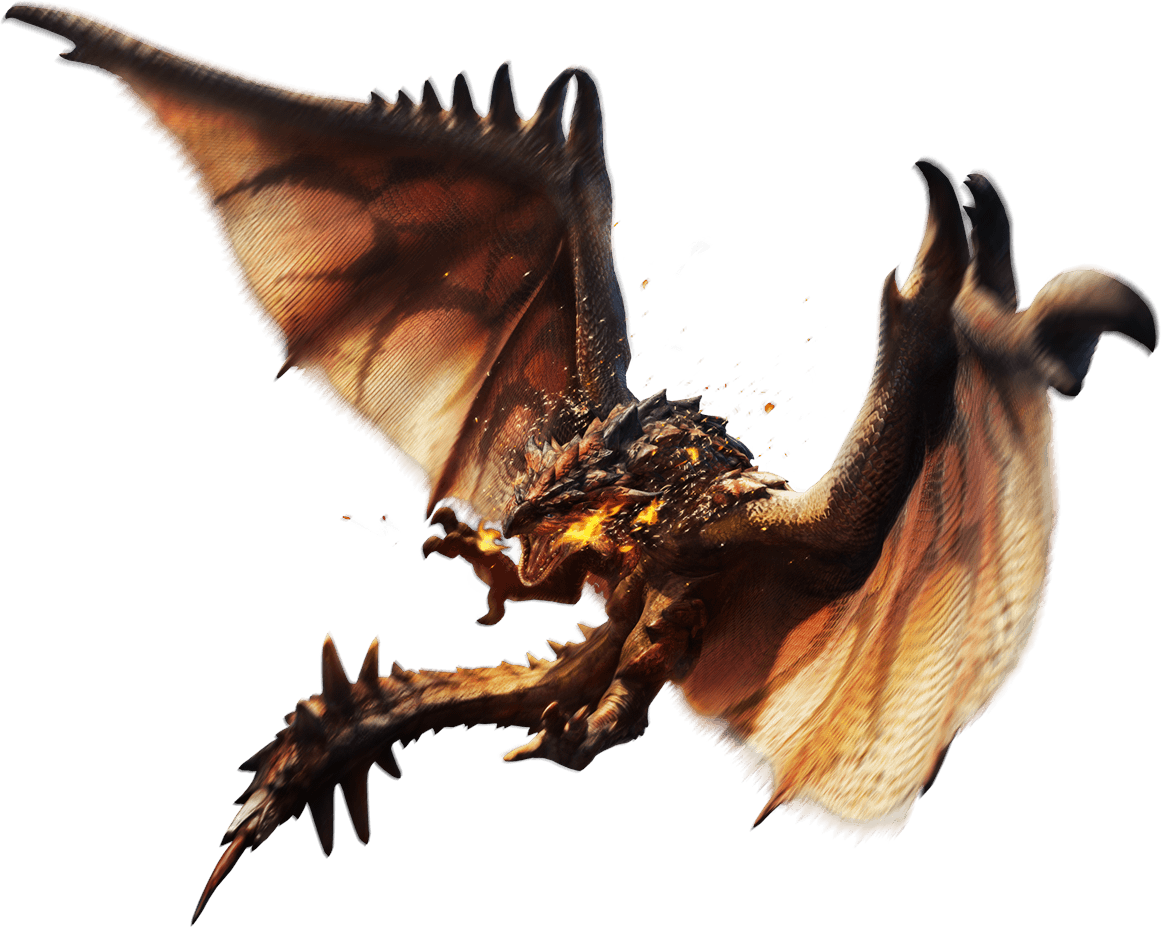
Piscine Wyvern: Piscine Wyverns are a class of monsters introduced in the first generation. This class is made up of wyverns that have evolved to be specialized in swimming in just about anything and that lack the ability to fly.
Example:

Carapaceon: Carapaceons are crustacean-like monsters that have hard shells and exoskeletons or crab-like bodies, which mostly require weapons with at least green sharpness to break. When they're weakened by physical damage, they show internal bleeding by the frothing of the purple bubbles from their mouths. Most of these crustaceans resemble crabs, lobsters or scorpions.
Example:
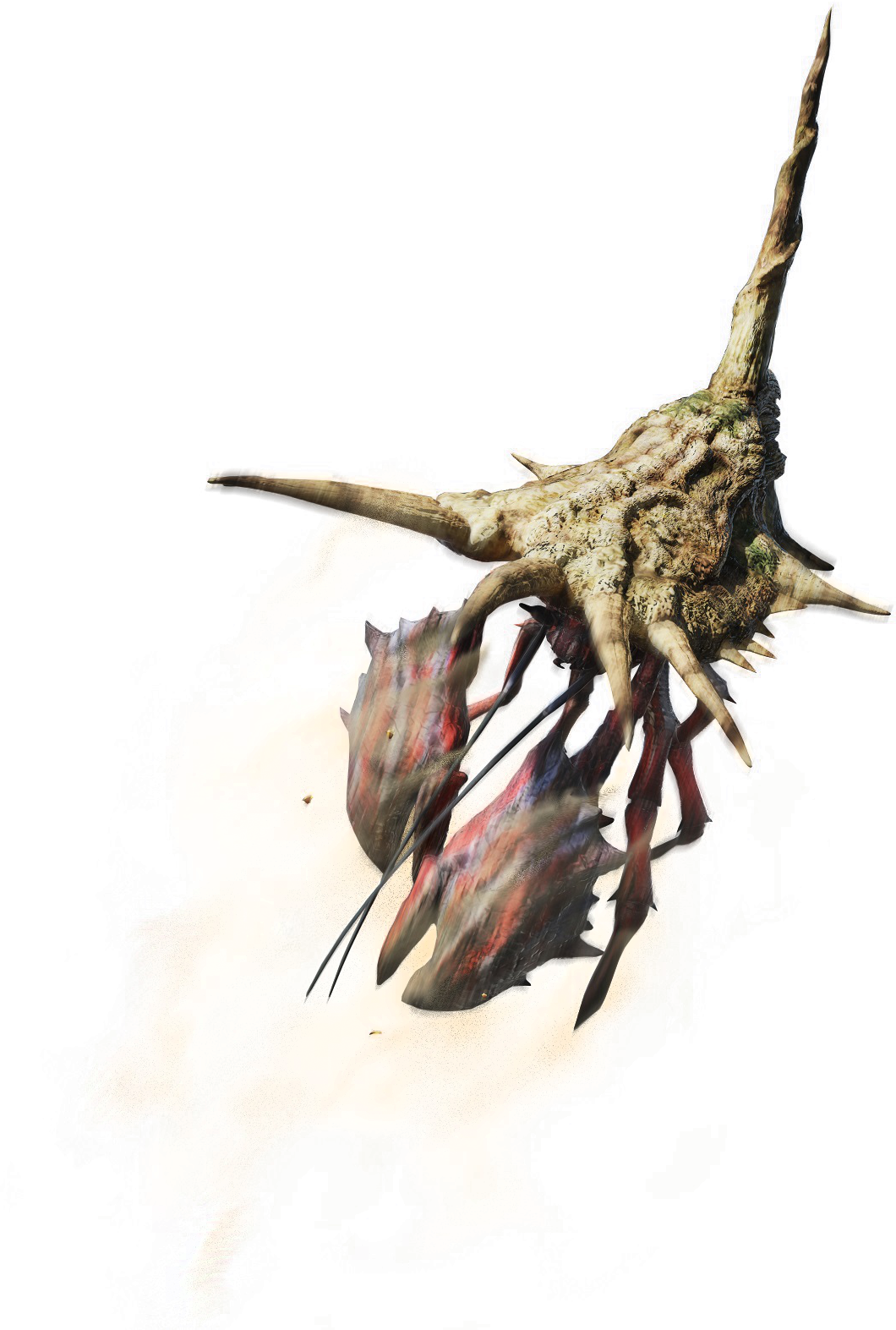
Amphibian: Amphibians are a class of monster, they are superficially frog-like in body structure, with powerful, spring-like back legs and muscular forelegs. They are known to inhabit a diverse range of environments and are typically carnivorous.
Example:
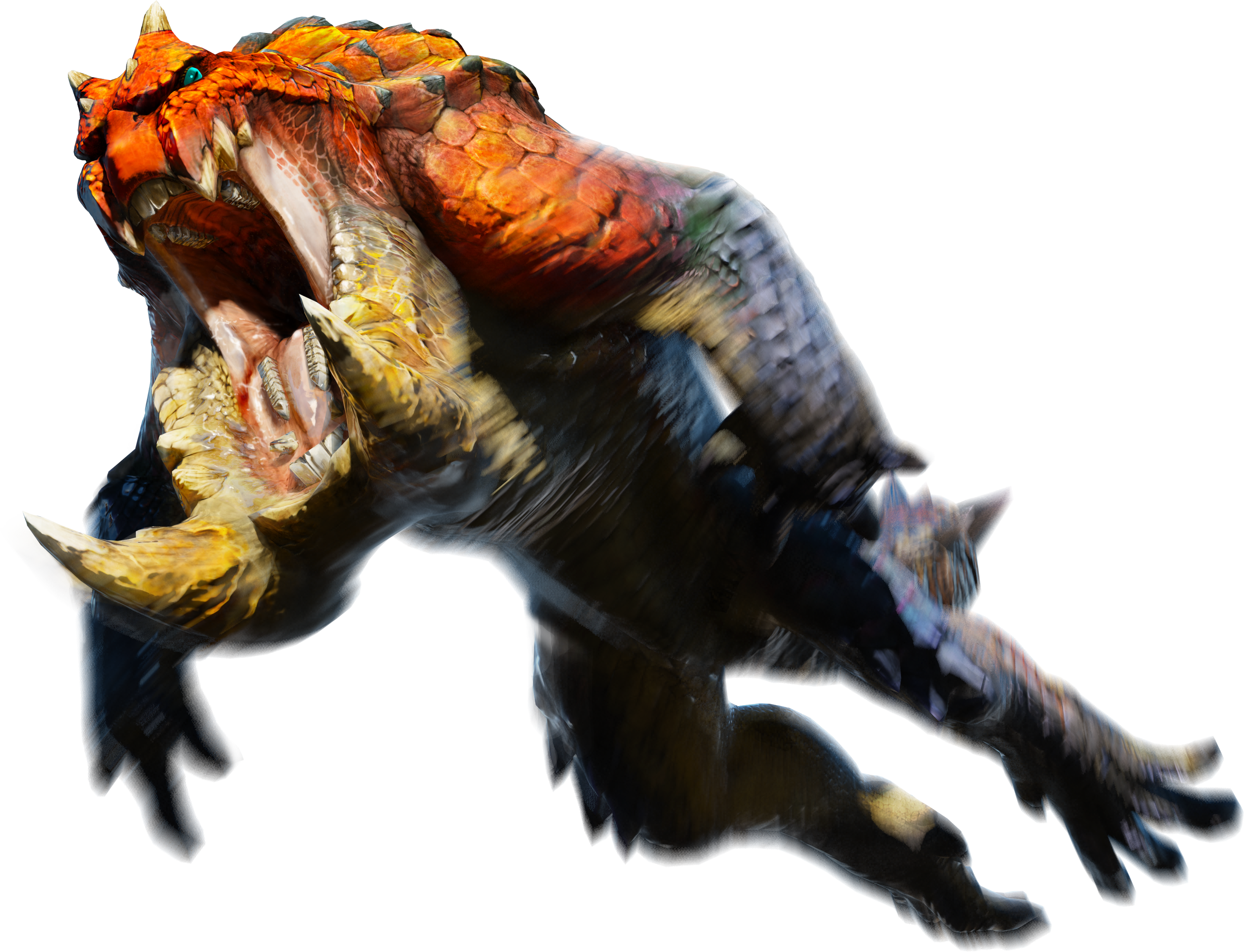
Primatius / Pelagus / Fanged Beasts: Fanged Beasts (also known as Pelagus and Primatius) monsters are beastly mammalian creatures that operate with only legs, and no wings. They are often much faster than other larger threats.
Pelagus Example:

Fanged Beast Example:

Leviathan: Leviathans are a class of monsters first appearing in the third generation. This class is large wyverns that are specialized in swimming. Leviathans are known to usually be the top predators of their environments like Flying Wyvern.
Example:
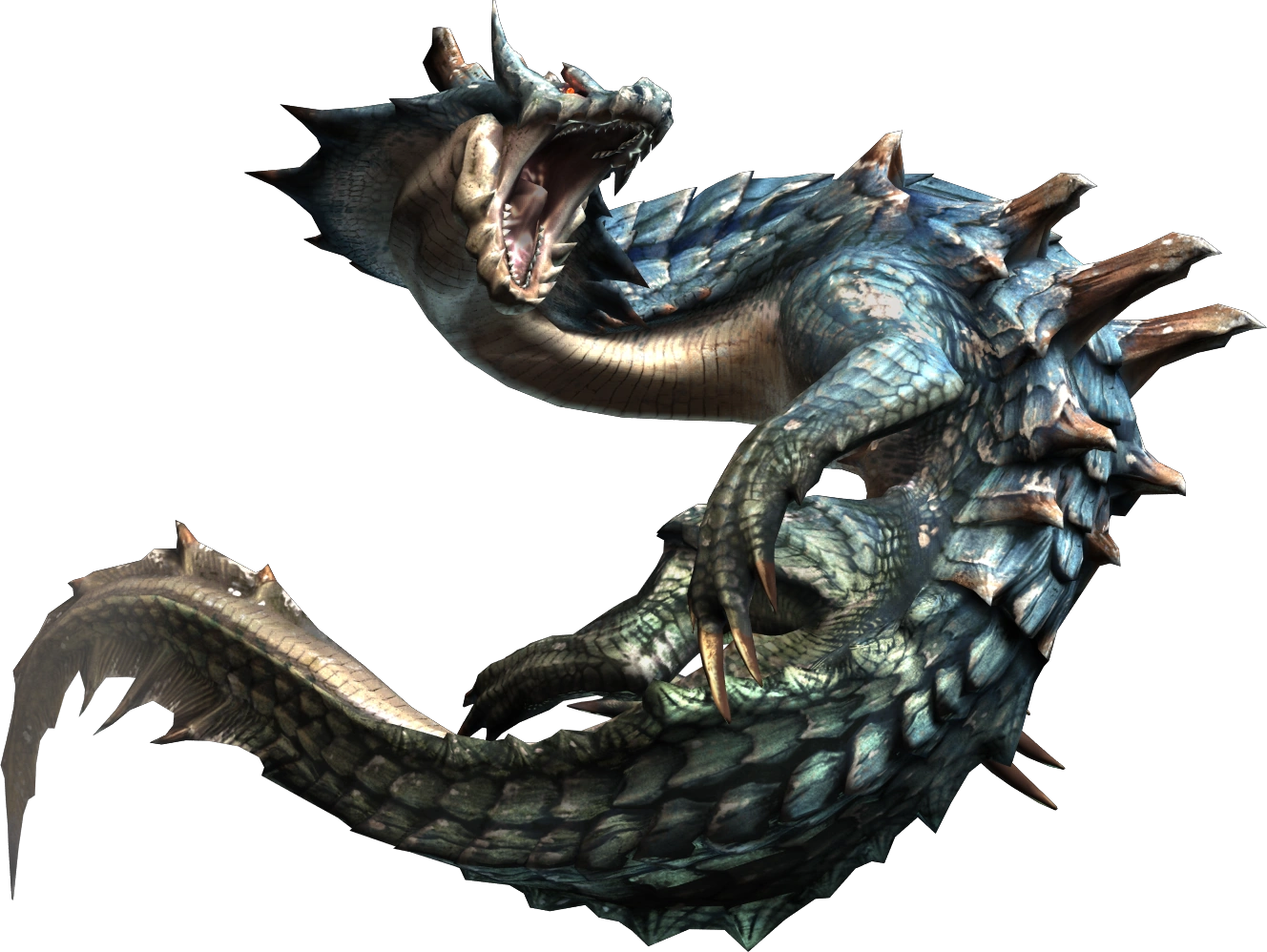
Snake Wyvern: Snake Wyverns are a class of monster first introduced in the fourth generation. These monsters are known for their serpentine features, such as long, coiling bodies and forked tongues. They can range dramatically in both size and overall body structure, with some members being large, serpent-like land-dwellers, while others are smaller and more reminiscent of Flying Wyverns.
Example:
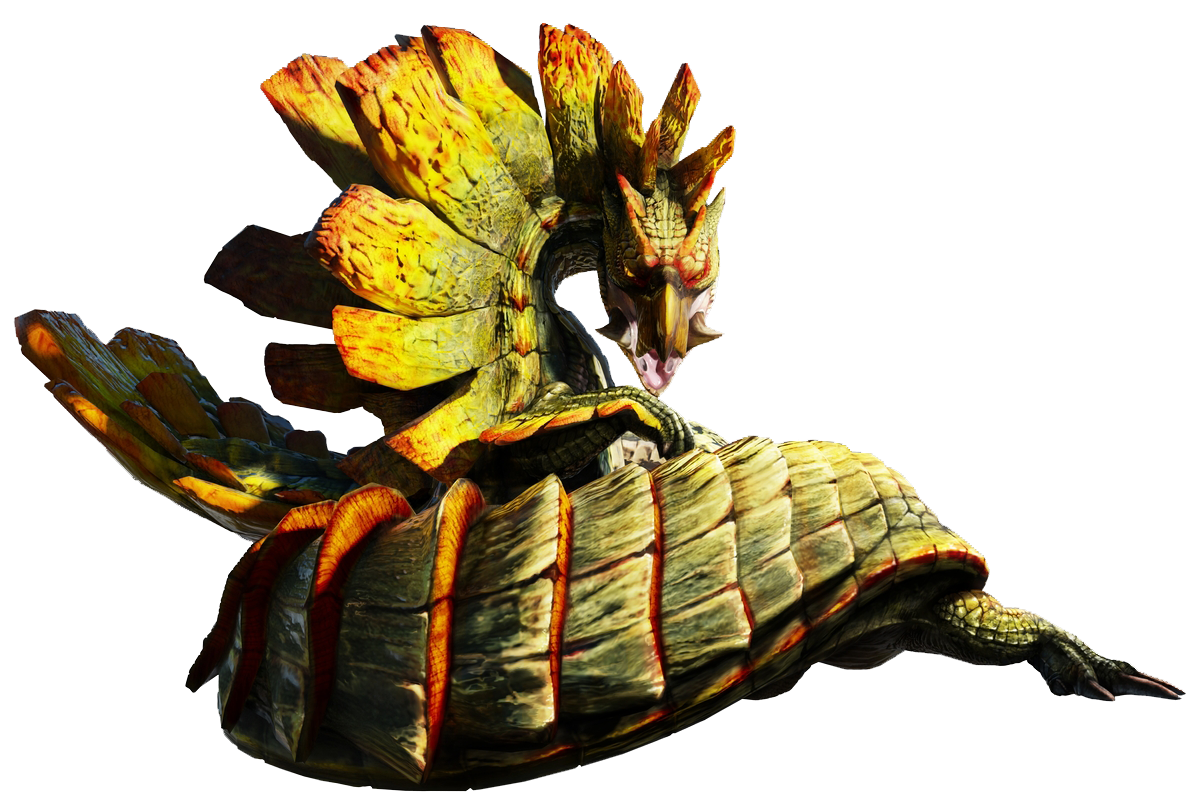
Brute Wyvern: Brute Wyverns are a class of monsters first introduced in the third generation. This is class is considered to be Wyverns that are adapted to complete life on land, even sometimes being called Theropods from greatly resembling some predatory dinosaurs. These monsters are typically large, bipedal theropods, that are prone to living in areas abundant in food sources. Brute Wyverns exhibit a wide variety of dietary habits; some are strictly herbivorous or carnivorous, while others subsist on insects or even minerals. These monsters often use their heavy, muscular bodies to charge blindly through an environment to damage attackers or prey, and include many defensive adaptations, including tail clubs, horns, and even hammer-like chins and fists. Like most classes, Brute Wyverns can be found in almost any type of environment.
Example:

Fang Wyvern: Fanged Wyverns are a class of monster first introduced in the third generation. They are known for being Fanged Beast-like Wyvern monsters. The only known species of these wyverns are Zinogre and its subspecies.
Example:
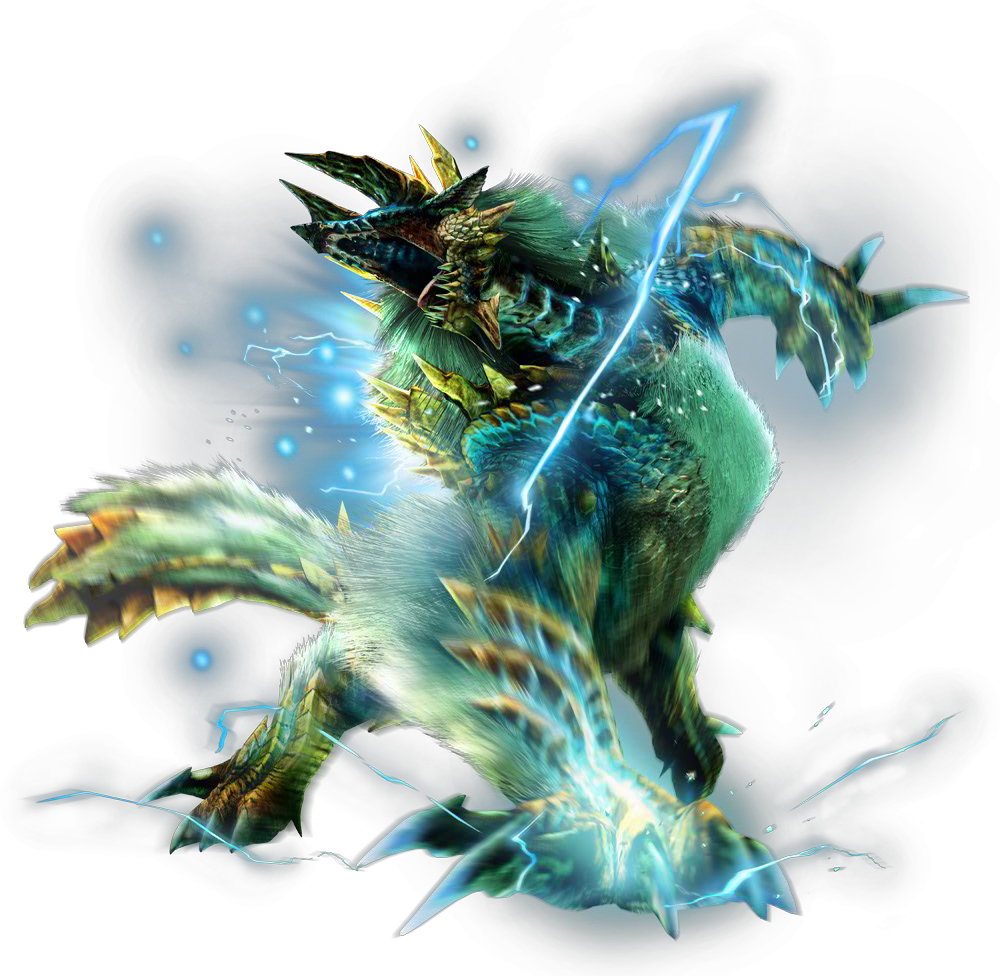
Elder Dragons: Elder Dragons are a class of monsters introduced in the first generation. This class is made up of monsters that have lived eternally since ancient times, that are able to bring destruction to whole ecosystems.
Example:
